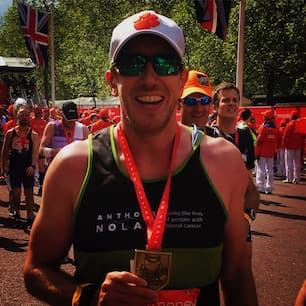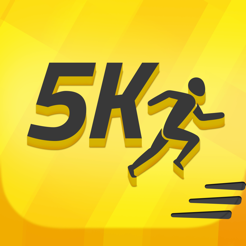At the start of the year I had a conversation with my partner about fitness and how challenging it is to stay fit and healthy as someone who spends the majority of my day at a desk.
I’d been on my bike on my indoor trainer over sporadically over the winter, but found it a bit of a faff to get it all set up each time and to handle the coldness of the conservatory it was sat in.
After mentioning that I’d run the 2017 London Marathon and not really run much since pulling my hamstring a few months later, she encouraged me to try running again.

The idea of just throwing on a pair of shorts, a T-shirt and some running shoes then getting out in the fresh air was really appealing.
However, having spent the best part of two years in annoying discomfort after damaging my hamstring, I was nervous about actually getting out and putting myself at risk of going through all that rehab again.
I had heard of the Couch to 5K program a number of times, more recently from a family member who used it to get running for the first time in decades (albeit she’d let it lapse for medical reasons).
As an ex-National league level basketball player, the little voice in my ear that remembers those days vividly wasn’t particularly happy about considering something so basic. Me? Needing a couch to whatever program? I’m an athlete, don’t be daft!
Once I addressed the harsh reality of not regularly playing sport at a national level for at least 20 years and looking in the mirror at a middle aged body, I was able to swallow my pride and start looking at how I wanted to approach the challenge.
Finding a plan
It turns out there are lots of variations on the Couch to 5K plan.
There are different timespans (10 to 16 weeks), and different ramp ups (more time spent doing the initial low intensity intervals or less time on those and more time at longer runs), plus a tonne of different options for how to track your progress (spreadsheets, apps, printable plans etc).
Being the geek and Apple watch owner I am, I looked through a few options on the App Store before settling on Couch to 5K Runner.

It had the right balance of difficulty of ramp up, and a friendly interface to keep track of progress & next steps.
Motivation
When I ran my only marathon (so far) in 2017, I found having a plan to follow a real help when dealing with motivation issues.
Don’t feel like getting out of bed? Well the plan says today is a 10km run, so you better get up and get it done.
Raining or snowing outside? Doesn’t matter, the plan says it’s a 10 mile run, so let’s just get it done.
Starting the C25K plan was similar. The app says you need to walk for 5 minutes so you walk, now it’s saying run for 5 so you run. It's simple to follow.
Simple doesn’t mean easy
One of the things I found hard about the program was going slow and not rushing things.
The initial phases of the program are a walk-run-walk pattern increasing in distance run and decreasing in distance walked each time out.
Like many ex-sports people I know, I’ve found it hard going when it comes to handling changes in my body and the difference between what I think my body can do versus what it’s capable of at the time - I suppose that refusal to accept that current state is acceptable is a contributing factor to improving and succeeding at a sport.
The real difficulty of following a very simple plan is that I was pretty sure I could push things a bit harder - just another minute longer running than what it said would be ok, right?
Wrong!
Follow the plan and remember to warm up & stretch properly
I quickly learned why the plan ramps up gently - I went off too fast and it wasn't long till the hamstring was complaining, then my right ankle joined in - after many years of not running it takes time for your body to build up strength in your joints and connecting ligaments.
After swallowing that pesky pride again and properly following the plan it didn't feel like my hamstring and ankle were getting better.
I’d been doing some basic warmup movements and a bit of stretching after the run, but after a bit of research I realised I needed a little more.
As warm up I’m now following this plan:
- 8 x 10s x Cobra stretch
- 8 x 10s x Bridge
- 8 each side x 10s x Opposite leg push / Dead bug
- 8 each side x 10s x Side plank
- 10 x Mountain climber slowly
- 30s High knees on the spot
- 30s Butt kicks on the spot
And to stretch after the run, I work through static stretches for each pair of leg muscles (quads & hams, calves & shins/ankles, glutes & hip flexors) around 45 seconds per muscle.
The real change came when I started properly foam rolling my quads and calves - a lot of the tightness and pain I’d been experiencing as I increased my distances went away, and I was able to complete the program with no more issues.
Result!
I completed the program in 12 weeks as per the plan; the feeling of completing the first full 5k was a real rush of endorphins and joy.
The next challenge will be to turn this initial movement into a regular thing. I’m hoping to run at least a couple of 5km runs per week and maybe start joining a parkrun or maybe even a 10km race at some point.
That Couch to 5K plan really worked, if you’ve been thinking about it, go on give it a go!
